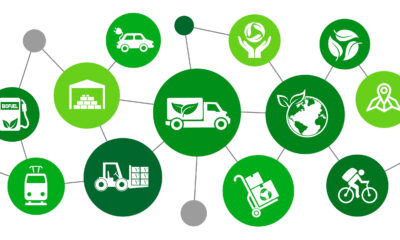

Environment
Meeting Carbon Reduction Targets With Waste Reduction Supply Chains
Sustainability is one of the biggest factors that any business should take into consideration when developing a supply chain. McKinsey has talked about the importance of sustainability in supply chains.
McKinsey pointed to some hard data on the need to adopt more sustainable supply chains to meet growing consumer demand, while also lowering carbon footprints of companies producing and distributing products.
The climate pact between 195 countries is drawing more attention to this issue. McKinsey points out that they will need to lower their carbon intensity by 90% to meet both output growth and carbon reduction targets.
Incorporating Sustainability into Supply Chain Models
A commitment to zero waste is becoming an integral aspect of any cost-reducing business strategy. As well as improving your sustainability performance, a commitment to drastically limiting waste allows you get the most value from your investment.
Sid Holian a director that works for Bis Henderson Consulting, has shared some insights on the role of supply chains in sustainable businesses with us. He has also shared a new eBook that you can learn more about the topic.
How do you build a zero-waste, cost efficient supply chain?
1. Effective resource management
The key to reducing waste – and saving money – in your supply chain is stringent resource management. All your resources – whether human, material or digital – must be optimized. Every production process along your supply chain must be scrutinized. You may be able to reduce, reuse or redesign waste produced along the chain.
Intelligent product design
Efficient use of resources begins with effective product design. In order to reduce waste from product defects and returned goods, products must be of a high quality. They should be designed to be easily repairable, reusable and recyclable. Keeping products out of landfills also fattens your profit margins. It is more cost-efficient to refurbish a product than to create a new one from scratch.
Use of scrap and recycled material
An important aspect of effective resource management is making use of scrap and recycled materials. A good example of this is the Renault re-manufacturing plant which melts old products down in to raw materials to be re-used in manufacturing new parts. The plant generates a revenue of £270mn annually. In the process, it has also reduced its water and energy use by 80%.
2. Implement flawless quality control
In order to fully commit to zero waste production, you must adopt a holistic approach to quality control. It is no longer enough to simply assess the quality of a manufactured product. You must also examine the raw waste the manufacturing process produces, and work to minimize this.
3. Inventory control
Having a complete overview and strict control of your inventory is a sure-fire way to reduce waste in your supply chain. Avoid ordering a surplus of products and prevent any subsequent waste that produces.
4. Listen to your supply chain employees
Essentially, reducing waste along your supply chain is all about optimizing every process along the way. Your end goal is always to give your customers what they want, when they want it, at minimal cost to yourself and the environment. Listening to employees along every step of your supply chain is crucial to identifying waste.
Employees along different stages of your supply chain will be able to give unique insights on improving product design, quality control and resource management. It is also sensible to get in touch with an experienced supply chain consultancy, who can guide you through the waste reduction process.
Conclusion
Employees along different stages of your supply chain will be able to give unique insights on improving product design, quality control and resource management. It is also sensible to get in touch with an experienced supply chain consultancy, who can guide you through the waste reduction process.


 Environment10 months ago
Environment10 months agoAre Polymer Banknotes: an Eco-Friendly Trend or a Groundswell?

 Environment11 months ago
Environment11 months agoEco-Friendly Home Improvements: Top 7 Upgrades for 2025

 Features9 months ago
Features9 months agoEco-Friendly Cryptocurrencies: Sustainable Investment Choices

 Features10 months ago
Features10 months agoEco-Friendly Crypto Traders Must Find the Right Exchange





























